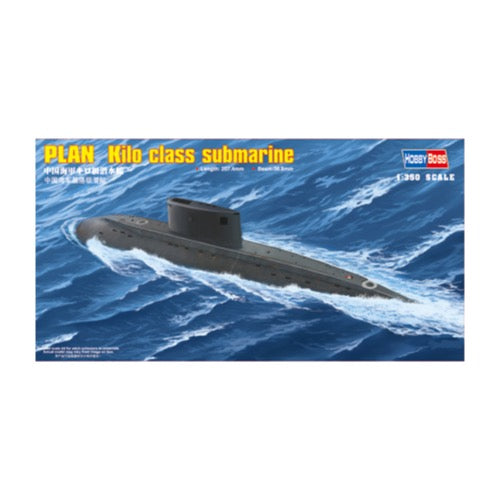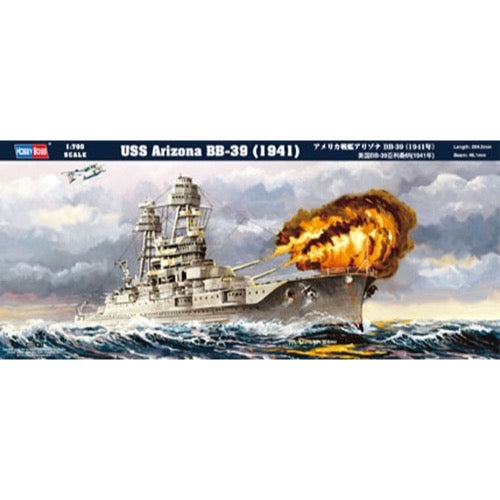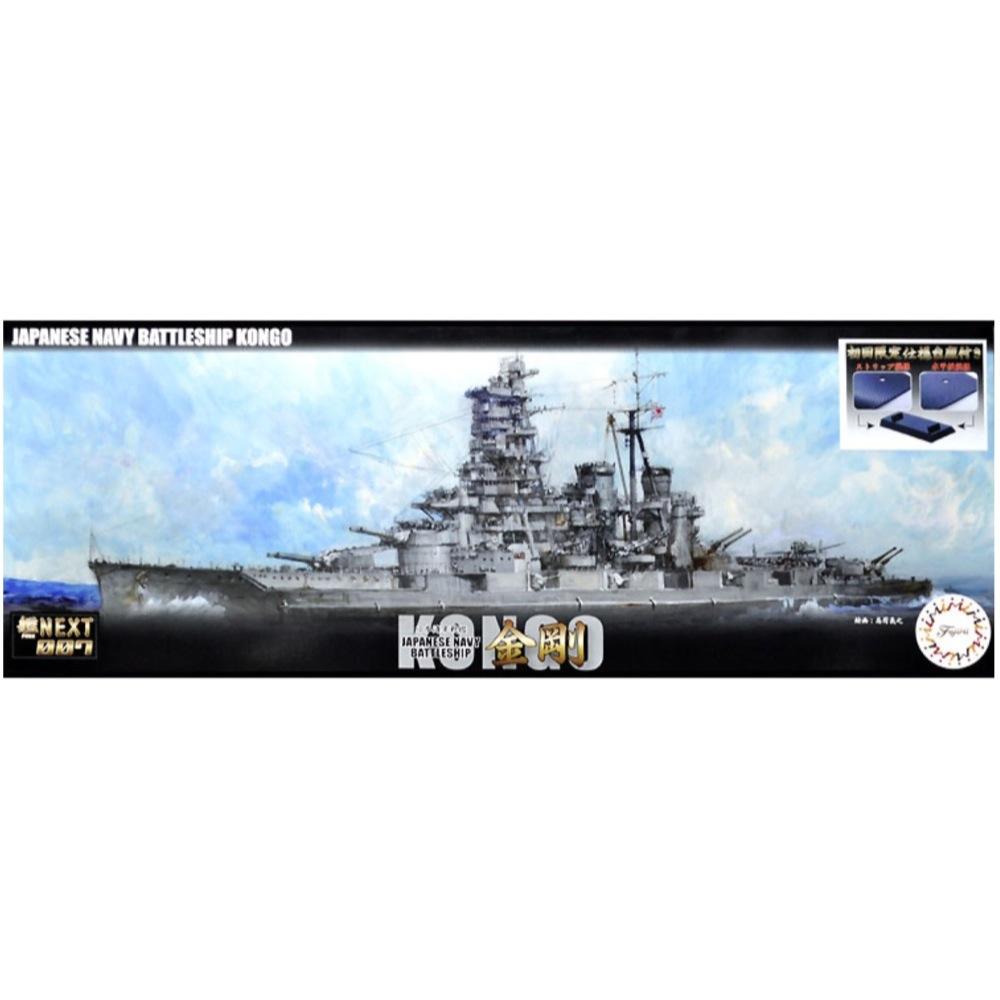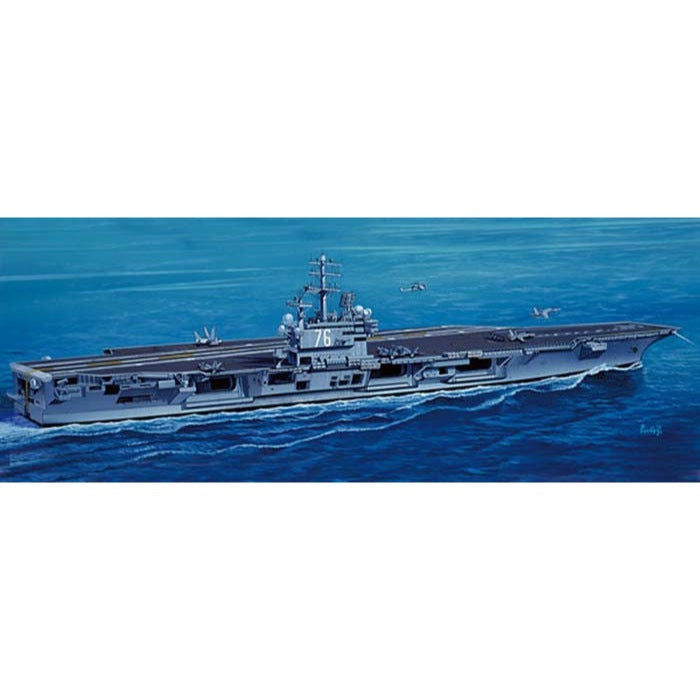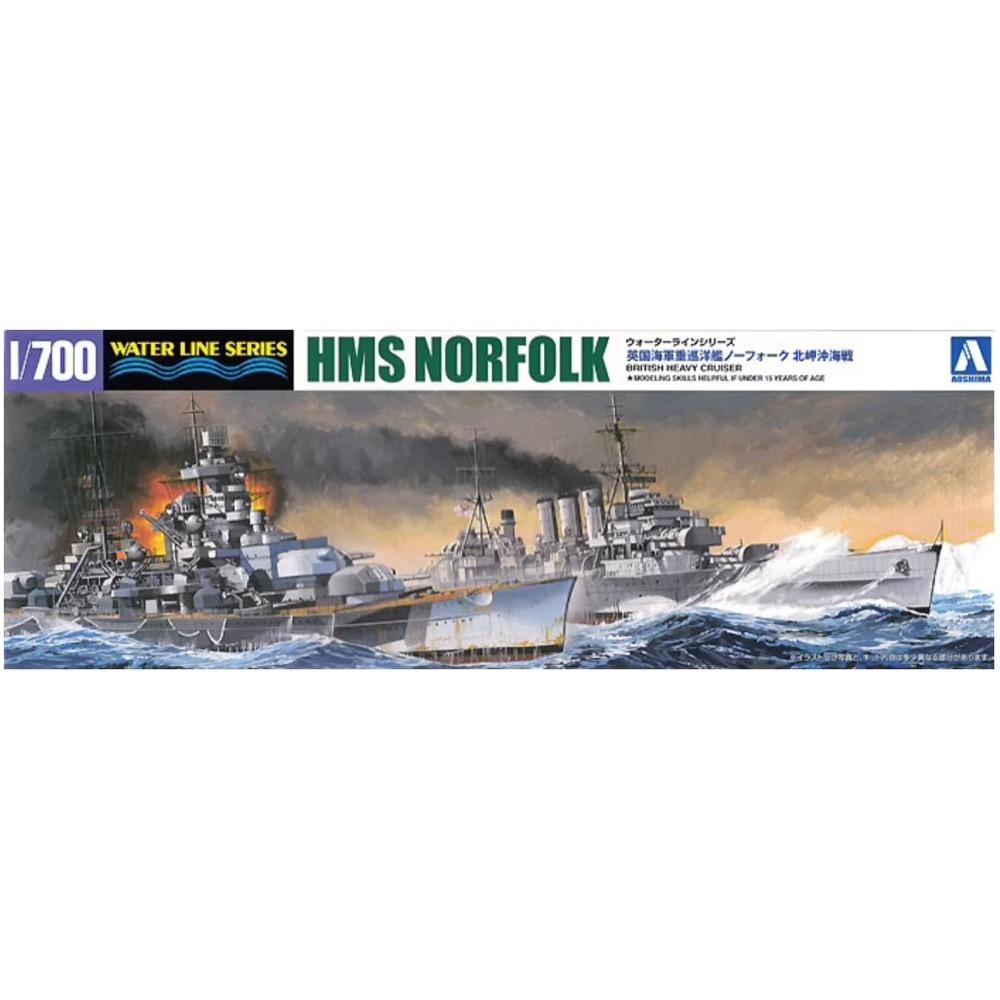
Aoshima A005670 1/700 British Heavy Cruiser Norfolk
23.00
$
<p>HMS Norfolk of the Royal Navy was commissioned in April 1930 and later served with the Home Fleet until 1932. Then Norfolk went to the America and West Indies Station between 1932 and 1934. From 1935 to 1939, she served on the East Indies Station before returning home to be refitted in 1939. With upgraded radars, she was one of the ships to sight the German battleship Bismarck in 1941, later joining the battle. During the Battle of the North Cape in 1943, she engaged in battle which resulted in the sinking of German battleship Scharnhorst.</p>
<p>Aoshima's newest version of the British Navy's HMS Norfolk features its standard hull and catapults, and comes with decals for its camouflage paint job.</p>
<p>This is an injection-plastic ship model kit.</p>
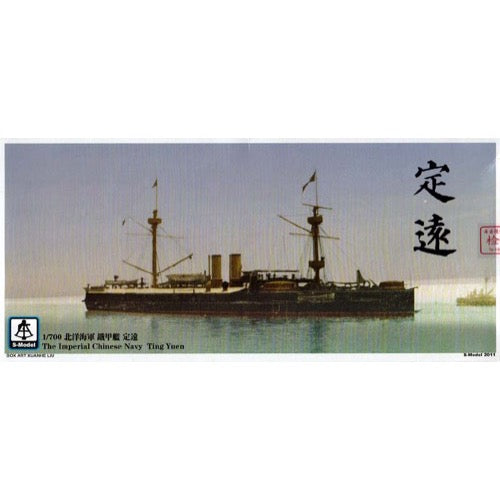
HAT 00001 1/700 Chinese Ting Yuen Ship
15.00
$
<h3>Chinese Battleship Ting Yuen</h3>
<p>The Ting Yuen was built by the German Vulcan Shipyards in 1884 to a modified German design for the Beiyang (Northern) Fleet. This ship was intended to help bring the Chinese fleet to par with more modern European fleets stationed in the Pacific.<br><br>Her main armament was four 12" guns paired in two turret, mounted offset from each other, forward of amidships. There were also two 6" guns mounted singly in turrets at the extreme bow and stern, as well as various 37mm deck guns, torpedo tubes, and two torpedo boats were also carried aboard.<br><br>Ting Yuen was in service for around 10 years. She saw action in 3 notable battles, and was scuttled at the Battle of Weihaiwei in the First Sino-Japanese War, after being struck by Japanese gunfire and a torpedo.</p>
<h3> Includes:</h3>
<ul>
<li>3 frames with details</li>
<li>decal (sticker)</li>
<li>2 photo-etching</li>
<li>coloring scheme for model</li>
<li>detailed instructions in English</li>
<li>Glue, paint not included</li>
</ul>
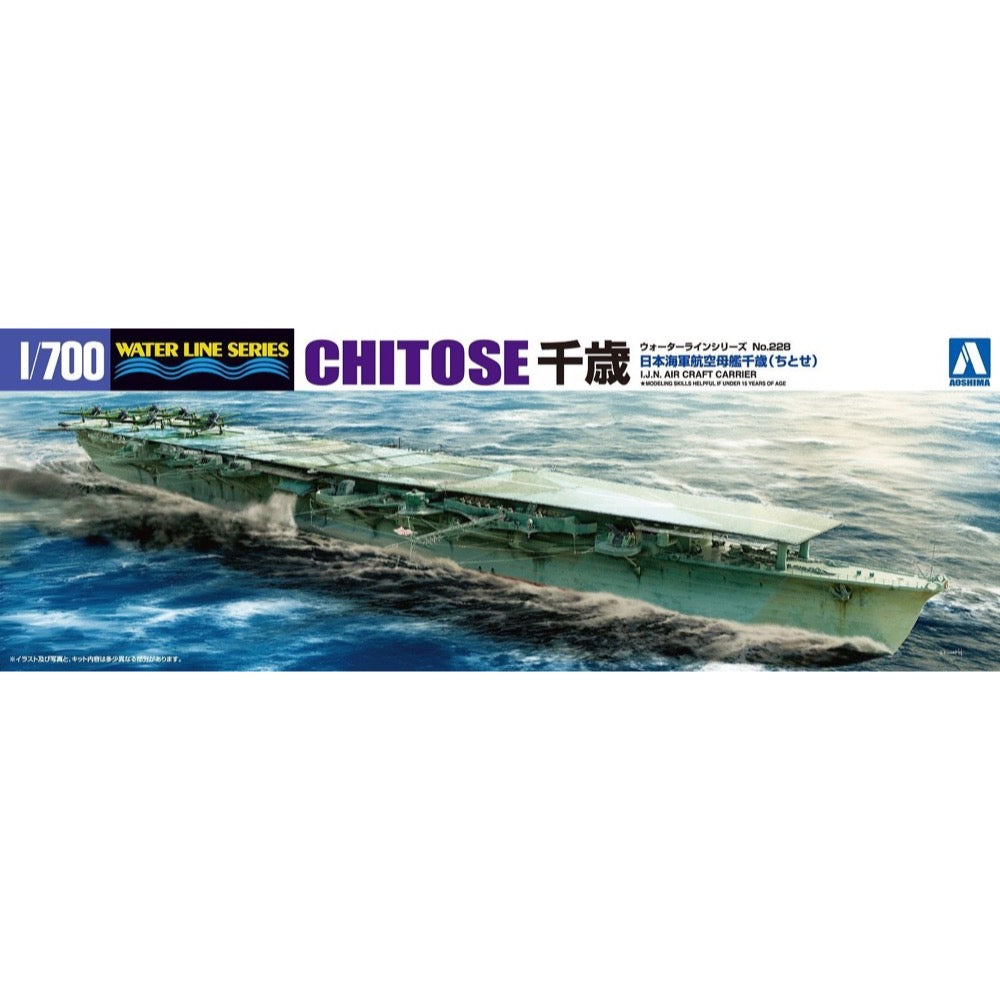
Aoshima A000951 1/700 IJN Aircraft Carrier Chitose
23.00
$
<p>Chitosa was a light aircraft carrier of the Imperial Japanese Navy during World War II, and was first laid down as a seaplane tender in 1934. Although Chitose was speculated to carry Type A midget submarines, she underwent conversion to a light aircraft carrier at Sasebo Navy Yard in 1943, and was recommissioned on Nov. 1, 1943, and saw several naval actions. She was sunk by a combination of naval bombers during the Battle of Leyte Gulf.</p>
<p>Molded in gray plastic, and includes clear parts and decals.</p>
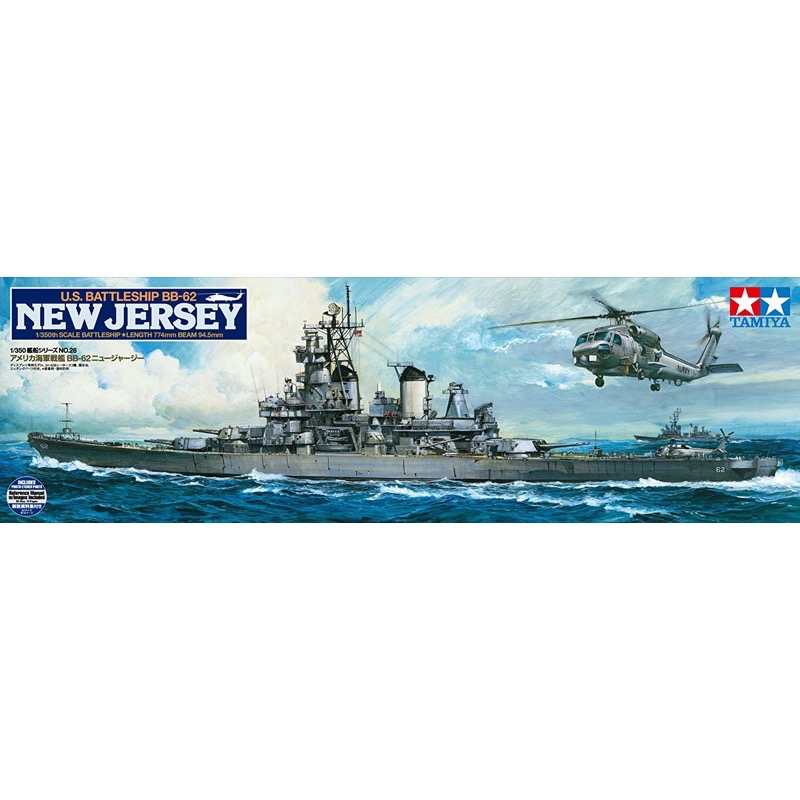
Tamiya 78028 1/350 USS New Jersey with Upgrade Set
74.00
$
<h3>The Big J Circa 1982</h3>
<p>The 45,000-ton Iowa-class was the the largest and last battleships built by the U.S. Navy. The USS New Jersey, affectionately known as the "Big J," was the second ship of this class and saw service in WWII from early-1944. However, the advent of carrier airpower changed the nature of naval warfare and New Jersey was withdrawn from frontline duty after WWII in 1948. She was reactivated to participate in the Korean War and Vietnam War, but was again placed in reserve in 1969. However, thanks to President Reagan's policy of strengthening the navy, the modernization of the Iowa-class was proposed in 1981 and New Jersey was chosen as the first ship to undergo this program. She was equipped with new weaponry including Tomahawk cruise missiles, Harpoon anti-ship missiles, and Phalanx CIWS as well as new radars, ECM, and other electronic systems. She served as a missile-carrying battleship until her final decommissioning in 1991 and was eventually stricken from the U.S. Navy register in 1995. USS New Jersey was then restored to become a floating museum in Philadelphia.</p>
<h3>Features</h3>
<ul>
<li>1/350 scale plastic assembly kit depicts the USS New Jersey as she appeared in 1982. Length: 774mm, Beam: 94.5mm, Height: 182mm</li>
<li>The superstructure and slender hull with clipper bow are accurately reproduced. Screw shafts are made from stainless steel.</li>
<li>The modern equipment including Tomahawk and Harpoon missile launchers as well as Phalanx CIWS are highly detailed.</li>
<li>Comes with parts to depict two SH-60B Seahawk helicopters.</li>
<li>Other accessories include two 1/350 scale 16-inch shells and two Tomahawk missiles. Decals are included to depict the helicopter pad.</li>
<li>Full hull model display stand is included.</li>
<li>Both injection-molded and photo-etched parts are included to depict the discone-cage antenna at the bow.</li>
<li>Photo-etched parts precisely recreate the mast radar antennas.</li>
<li>Precision-made photo-etched parts enhance detail throughout the model.</li>
<li>Helicopter deck fencing may be assembled in up or down position.</li>
<li>New parts such as 12.7cm gun turrets, Mk.38 fire control systems, and Mk.13 fire control radars have been included.</li>
<li>Comes with a B5-size, 14-page reference booklet.</li>
</ul>
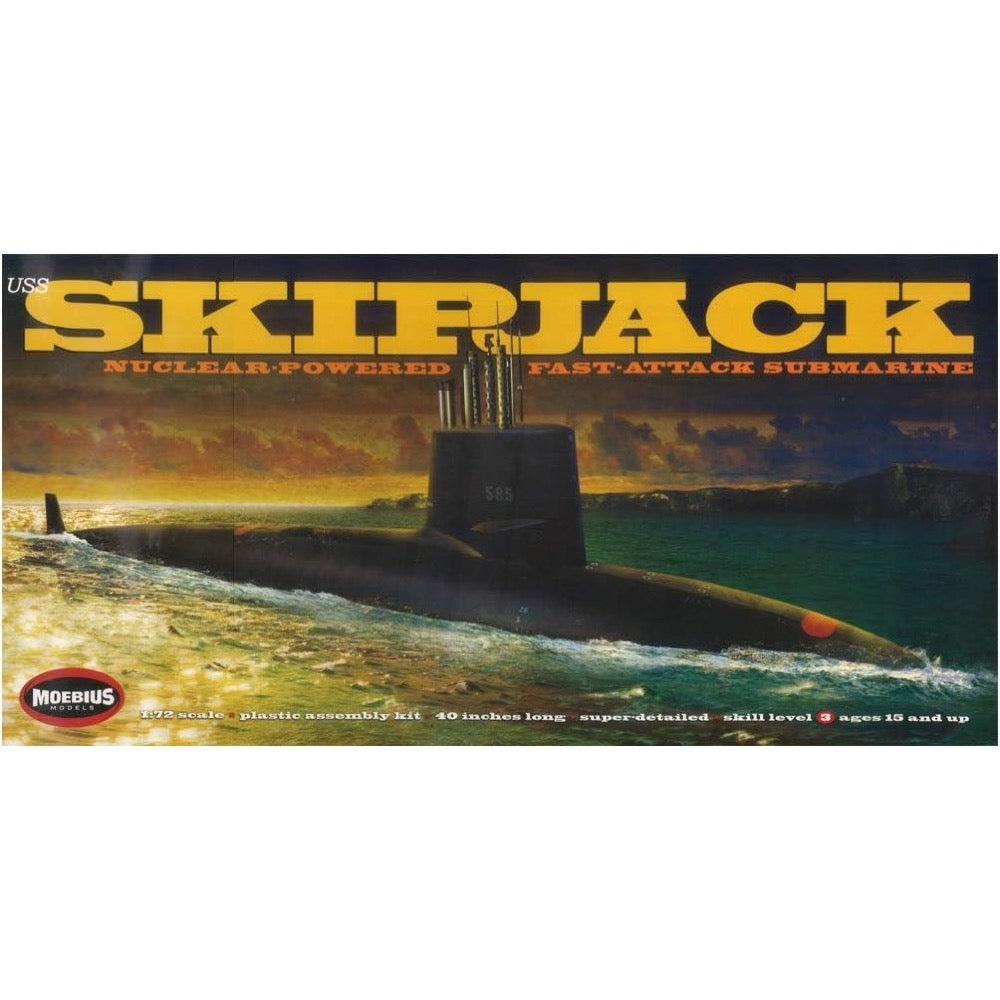
Moebius 1400 1/72 USS Skipjack
83.00
$
<h3>USS Skipjack</h3>
<p>The Skipjack kit features decals for all 6 boats in the class. 1/72 scale, easily converted to radio control (not included). Over 40 inches long when assembled!</p>
<!---->
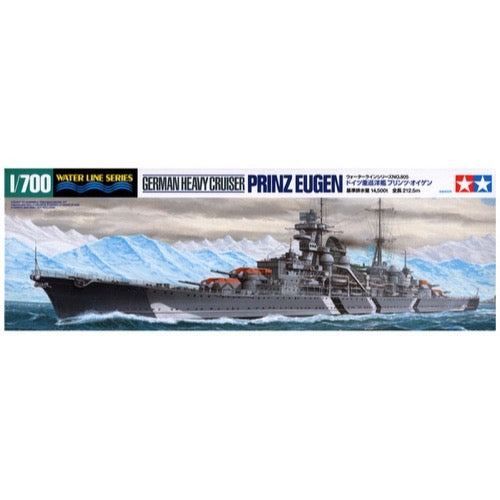
Tamiya 31805 1/700 Prinz Eugen German Heavy Cruiser
17.00
$
<h3>Tamiya presents a plastic model assembly kit of the Heavy German Battle Cruiser, Prinz Eugen.</h3>
<p>The Germania Belst Company from Kiel constructed the Prinz Eugen as the third and last Admiral Hipper Class Heavy Cruiser to be commissioned by the Kriegsmarine. Admiral Hipper Class Heavy Cruisers were characteristically larger than heavy cruisers from other countries, and the huge Prinz Eugen was elongated an additional 5 meters. With a displacement tonnage measuring at over 14,000tons this enormous German cruiser packed the firepower of four 20.3cm twin gun turrets for its main armament. In May of 1941 the Prinz Eugen participated in Operation Rheinubung to intercept trade ships in the Atlantic. On this mission she joined forces with the Battleship Bismarck to help sink the British Battle Cruiser Hood and inflict considerable damage on the British Battleship Prince of Wales. In February of 1942, the Prinz Eugen, together with the German battleships Scharnhorst and Gneisenau left their docks at Brest for Norway on an unexpected dash through the British Channel in broad daylight. Known as Operation Cerberus, this was to be one of the riskiest, yet best prepared and best coordinated operations carried out by German forces in the Second World War. After arriving safely in German waters, Prinz Eugen was active in the strategic withdrawal from the Russian front, firing thousands of shells at encroaching Russian forces when she provided support for evacuation ships carrying German troops and civilians. One of the few German cruisers to survive World War II, the Prinz Eugen now rests in the warm waters of the Marshal Islands. After enduring two atomic bomb tests she lies capsized in the calm shallows of the Kwajelein Atoll.</p>
<h3>Features</h3>
<ul>
<li>
<p>1/700 scale, total length: 303mm, total width: 31mm.</p>
</li>
<li>
<p>Equipment and armament faithfully recreated. Prinz Eugen can be assembled as it appeared in two different operations: Operation Rheinubung, 1941 and Operation Cerberus, 1942. In Operation Cerberus, Prinz Eugen was equipped with 5 additional 20mm AA-gun quadruple turrets for the "Channel Dash."</p>
</li>
<li>
<p>Every detail of the ship's form is accurately recreated down to the subtle line separating the left and right side of the ship's hull. Weaponry, searchlight, and the minutest onboard equipment are all portrayed in breathtaking detail.</p>
</li>
</ul>


